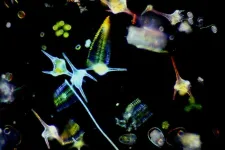(Press-News.org) How do city residents feel about animals in their immediate surroundings? A recent study by the Technical University of Munich (TUM), the University of Jena and the Vienna University of Technology shows how different the acceptance of various wild animals in urban areas is. Important factors are the places where the animals are found and their level of popularity - squirrels and ladybugs come out on top here. The results have important implications for urban planning and nature conservation.
The relationship between city inhabitants and urban animals is complex, as the study shows. The researchers conducted a survey to find out how Munich residents rate 32 urban animal species and where in the city they would prefer to see them. In general, respondents liked most of the animals. 23 of the 32 animal species received positive approval ratings. The majority of birds and mammals were very popular. The respondents also rated arthropods, lizards and frogs positively. Exceptions were martens, rats, wasps, slugs and urban pigeons. Cockroaches were the least popular. Respondents had a neutral attitude towards ants, spiders and snakes.
Acceptance depends on the animal and its location
According to the survey, all animals have a place in the city - except for the very few, very unpopular species. In the survey, city residents were able to choose from various locations in different proximity to their homes where the animals should be found. In most cases, participants placed the animals in urban areas such as their neighborhood, city parks, in the city in general and in the surrounding countryside. In contrast, they rarely mentioned their immediate living environment, such as in the garden, on the balcony or in the apartment. Participants placed some animals, such as squirrels and ladybugs, in all or almost all locations. They placed many species in several locations, while three species were often not placed at all: Cockroaches, rats and slugs. "It turns out that city residents' preferences for locations clearly correlate with their attitudes towards animals," explains researcher Dr. Fabio Sweet. The animals that were generally more popular were on average placed closer to home by the respondents.
Planning cities for people and animals
Prof. Wolfgang Weisser, head of the Chair of Terrestrial Ecology, emphasizes: "Increasing urbanization makes it necessary to actively care for animals in the city and to design urban development accordingly. If we know where people prefer or dislike certain animals, we can anticipate potential points of conflict. This allows us to identify places where species conservation in cities is accepted by people." The results show, for example, that human-wildlife conflicts are unlikely in city parks because the animals are accepted by most people there. Animals are also tolerated in the wider residential environment. Conversely, wildlife protection in the immediate proximity of the living space, such as the balcony, could meet with resistance.
Measures to promote urban biodiversity are most successful when they are not only ecologically sensible but also socially acceptable. It is therefore necessary to combine knowledge about the way these animals live and people's acceptance of them. In this way, urban planning can simultaneously promote animal welfare in cities and avoid conflicts between humans and animals.
How do city residents feel about animals in their immediate surroundings? A recent study by the Technical University of Munich (TUM), the University of Jena and the Vienna University of Technology shows how different the acceptance of various wild animals in urban areas is. Important factors are the places where the animals are found and their level of popularity - squirrels and ladybugs come out on top here. The results have important implications for urban planning and nature conservation.
The relationship between city inhabitants and urban animals is complex, as the study shows. The researchers conducted a survey to find out how Munich residents rate 32 urban animal species and where in the city they would prefer to see them. In general, respondents liked most of the animals. 23 of the 32 animal species received positive approval ratings. The majority of birds and mammals were very popular. The respondents also rated arthropods, lizards and frogs positively. Exceptions were martens, rats, wasps, slugs and urban pigeons. Cockroaches were the least popular. Respondents had a neutral attitude towards ants, spiders and snakes.
Acceptance depends on the animal and its location
According to the survey, all animals have a place in the city - except for the very few, very unpopular species. In the survey, city residents were able to choose from various locations in different proximity to their homes where the animals should be found. In most cases, participants placed the animals in urban areas such as their neighborhood, city parks, in the city in general and in the surrounding countryside. In contrast, they rarely mentioned their immediate living environment, such as in the garden, on the balcony or in the apartment. Participants placed some animals, such as squirrels and ladybugs, in all or almost all locations. They placed many species in several locations, while three species were often not placed at all: Cockroaches, rats and slugs. "It turns out that city residents' preferences for locations clearly correlate with their attitudes towards animals," explains researcher Dr. Fabio Sweet. The animals that were generally more popular were on average placed closer to home by the respondents.
Planning cities for people and animals
Prof. Wolfgang Weisser, head of the Chair of Terrestrial Ecology, emphasizes: "Increasing urbanization makes it necessary to actively care for animals in the city and to design urban development accordingly. If we know where people prefer or dislike certain animals, we can anticipate potential points of conflict. This allows us to identify places where species conservation in cities is accepted by people." The results show, for example, that human-wildlife conflicts are unlikely in city parks because the animals are accepted by most people there. Animals are also tolerated in the wider residential environment. Conversely, wildlife protection in the immediate proximity of the living space, such as the balcony, could meet with resistance.
Measures to promote urban biodiversity are most successful when they are not only ecologically sensible but also socially acceptable. It is therefore necessary to combine knowledge about the way these animals live and people's acceptance of them. In this way, urban planning can simultaneously promote animal welfare in cities and avoid conflicts between humans and animals.
END
Where wildlife is welcome
Study on the acceptance of animals in urban environments
2024-05-08
ELSE PRESS RELEASES FROM THIS DATE:
THC lingers in breastmilk with no clear peak point
2024-05-08
PULLMAN, Wash. – When breastfeeding mothers in a recent study used cannabis, its psychoactive component THC showed up in the milk they produced. The Washington State University-led research also found that, unlike alcohol, when THC was detected in milk there was no consistent time when its concentration peaked and started to decline.
Importantly, the researchers discovered that the amount of THC they detected in milk was low – they estimated that infants received an average of 0.07 mg of THC per day. For comparison, a common low-dose edible contains 2 mg of THC. The research team stressed that it is unknown whether this amount has any impact ...
An AI leap into chemical synthesis
2024-05-08
Chemistry, with its intricate processes and vast potential for innovation, has always been a challenge for automation. Traditional computational tools, despite their advanced capabilities, often remain underutilized due to their complexity and the specialized knowledge required to operate them.
Now, researchers with the group of Philippe Schwaller at EPFL, have developed ChemCrow, an AI that integrates 18 expertly designed tools, enabling it to navigate and perform tasks within chemical research with unprecedented efficiency. “You might wonder why a crow?” asks Schwaller. “Because ...
U of T researchers lead discovery of natural compounds that selectively kill parasites
2024-05-08
An international team led by researchers at the University of Toronto has found a family of natural compounds with potential as new and more effective treatments for parasitic worms. The compounds stall the unique metabolic process that worms use to survive in the human gut.
Parasitic worms transmitted through soil wreak havoc in developing countries in the tropics. Infection by these parasites leads to malaise, weakness, malnutrition and other debilitating symptoms, and can cause developmental defects in children and impair their growth.
“Soil-transmitted parasitic worms infect over one billion people around the world, typically in low-income communities of developing countries ...
Limited adaptability makes freshwater bacteria vulnerable to climate change
2024-05-08
Freshwater resources are limited, accounting for only 3.5% of Earth’s water, with just 0.25% accessible on the surface. Nevertheless, freshwater lakes are essential for ecosystem functioning and global carbon cycling due to their high biological productivity and microbial activity. They are critical to human survival, providing drinking water, supporting agriculture, fisheries, and recreation. However, climate change – particularly rising temperatures – threatens these habitats by disrupting microbial communities that are essential for nutrient cycling and water quality maintenance.
Challenging established evolutionary paradigms
“Considering ...
Gene linked to learning difficulties has direct impact on learning and memory
2024-05-08
A gene previously linked to intellectual disability has been found to regulate learning and memory in mice.
The gene, called KDM5B has previously been linked to some intellectual disability disorders and autism. In the general population, some variants are also associated with reduced brain function, although not sufficient to cause an overt disability or behavioural symptoms.
Now, researchers at King’s College London, the University of Exeter and the University of California Irvine have found that reduced function of the gene in the brain results in loss of learning ability and memory and a reduction in the brain’s ability to strengthen connections between neurons, ...
Study: Pressure to be “perfect” causing burnout for parents, mental health concerns for their children
2024-05-08
COLUMBUS, OHIO – Is the status of “perfect parent” attainable?
Researchers leading a national dialogue about parental burnout from The Ohio State University College of Nursing and the university’s Office of the Chief Wellness Officer say “no,” and a new study finds that pressure to try to be “perfect” leads to unhealthy impacts on both parents and their children.
The survey of more than 700 parents nationwide from June 15 – July 28, 2023 is summarized in the new report, “The Power of Positive Parenting: Evidence to Help Parents and Their Children Thrive.” The data shows that:
Fifty-seven ...
Healthy Start is life changing and could reach more families if it was reframed and better coordinated and resourced, says study
2024-05-08
The study was funded by the National Institute for Health and Care Research (NIHR), the research arm of the Department of Health and Social Care (DHSC), and was led by Professor Christina Vogel, Director of the Centre for Food Policy at City, University of London. DHSC commissioned this work to evaluate the Healthy Start scheme in England and understand how the scheme can be improved to reach more eligible families.
The Healthy Start scheme was launched in 2006. It offers financial support and free vitamins for pregnant ...
Study exposes alarming risks to Scotland's food delivery couriers
2024-05-08
A new study highlighting the risks encountered by food delivery couriers reveals a majority feel ‘unsafe’ when at work with every woman surveyed having experienced sexual harassment or abuse.
Led by Dr Pedro Mendonca from the Centre for Employment, Work and the Professions (CREWs) at Heriot-Watt University’s Edinburgh Business School, the two-year project gathered feedback from 207 workers, including 33 women, employed in the food delivery industry in cities across Scotland.
It reveals more than 81% felt unsafe in their job yet continued due to financial necessity while 78% believed their ...
Mobile teams bring COVID-19 vaccines to rural villages in Sierra Leone
2024-05-07
URBANA, Ill. – COVID-19 vaccination rates remain low in many African countries, often because providing access to vaccines is difficult in remote areas. A new international research project showed that intervention with mobile vaccination teams in Sierra Leone is an effective way of reaching rural populations to increase vaccination uptake.
Madison Levine, a doctoral student in the Department of Agricultural and Consumer Economics (ACE), part of the College of Agricultural, Consumer and Environmental Sciences (ACES) at the University of Illinois Urbana-Champaign, participated in the project as a field research assistant. She is a co-author ...
Kinsey Institute study shows female gamers only label half of sexual harassment incidents they experience as such
2024-05-07
A new study from the Kinsey Institute reveals that only 50.5% of women who were targets of sexual harassment during online gaming identified qualifying incidents as such. This figure dropped further to only 42.2% for women who witnessed sexual harassment of other women while gaming.
The study included 182 women from North America who played online video games at least once a week. Researchers examined a variety of sexual harassment behaviors, from unwanted sexual remarks to explicit images to sexual threats. In line with ...
LAST 30 PRESS RELEASES:
Sleeping in on weekends may help boost teens’ mental health
Study: Teens use cellphones for an hour a day at school
After more than two years of war, Palestinian children are hungry, denied education and “like the living dead”
The untold story of life with Prader-Willi syndrome - according to the siblings who live it
How the parasite that ‘gave up sex’ found more hosts – and why its victory won’t last
When is it time to jump? The boiling frog problem of AI use in physics education
Twitter data reveals partisan divide in understanding why pollen season's getting worse
AI is quick but risky for updating old software
Revolutionizing biosecurity: new multi-omics framework to transform invasive species management
From ancient herb to modern medicine: new review unveils the multi-targeted healing potential of Borago officinalis
Building a global scientific community: Biological Diversity Journal announces dual recruitment of Editorial Board and Youth Editorial Board members
Microbes that break down antibiotics help protect ecosystems under drug pollution
Smart biochar that remembers pollutants offers a new way to clean water and recycle biomass
Rice genes matter more than domestication in shaping plant microbiomes
Ticking time bomb: Some farmers report as many as 70 tick encounters over a 6-month period
Turning garden and crop waste into plastics
Scientists discover ‘platypus galaxies’ in the early universe
Seeing thyroid cancer in a new light: when AI meets label-free imaging in the operating room
Neutrophil-to-lymphocyte ratio may aid risk stratification in depressive disorder
2026 Seismological Society of America Annual Meeting
AI-powered ECG analysis offers promising path for early detection of chronic obstructive pulmonary disease, says Mount Sinai researchers
GIMM uncovers flaws in lab-grown heart cells and paves the way for improved treatments
Cracking the evolutionary code of sleep
Medications could help the aging brain cope with surgery, memory impairment
Back pain linked to worse sleep years later in men over 65, according to study
CDC urges ‘shared decision-making’ on some childhood vaccines; many unclear about what that means
New research finds that an ‘equal treatment’ approach to economic opportunity advertising can backfire
Researchers create shape-shifting, self-navigating microparticles
Science army mobilizes to map US soil microbiome
Researchers develop new tools to turn grain crops into biosensors
[Press-News.org] Where wildlife is welcomeStudy on the acceptance of animals in urban environments




